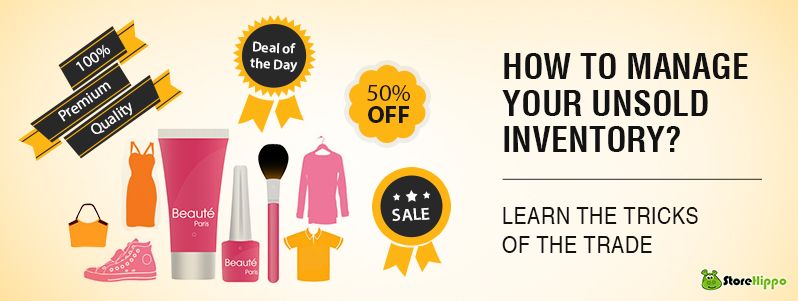Most of the E-commerce companies work as an inventory-led business model. Online retailers have to either buy in advance or they have to finally build their own inventory to order to provide fast and efficient delivery of products to their customers. There has been an exponential growth in online retailing. While this spells growth for the online retailers, at the same time this has led to an enormous challenge before the mobile e-commerce companies to manage their inventory.
It is a commonly known fact that the online merchants often face the situation of unsold inventory. This happens typically when, say, a clothing retailer is left with a lot of unsold stock when a season or festival ends. Maybe the stock was not sold because it went out of fashion or the product was not sold due to high price, size or colour issues. It is possible that a retailer couldn’t ascertain correctly the quantity of merchandise to order. Generally speaking, a product which has been on your ‘e-shelves’ for more than three months, calls for attention. It increases storage costs and the product loses its value over time. This reduces the cash-in-hand required to purchase other new and fast-selling products.
So, how does a retailer solve the issue of unsold inventory in order to recover at least a part of the amount invested? Hippo gives you a few suggestions which might come in handy:
Complement unsold products with hot selling items
You can sell your unsold product along with some other hot selling item and offer a special price for the combo deal. This is a wise and effective strategy. People are attracted to buy things which come at a special price along with their favourite products. Bundled up products often catch the eye of the customers. Say, you have some pairs of socks which aren’t selling, then offer them at a special discount along with purchase of shoes. Customers will think that this is a good deal and will automatically buy those socks which they never intended to purchase otherwise.
Give recommendations
Another option which can easily be explored by the retailers is to promote products by giving recommendations for related items. There are apps that engage customers with targeted marketing within a store. Offering your unsold items as suggested add-on is a sure shot way to tempt customers to buy a product when their wallet is already open.
Discounts
Give a higher discount for your unsold products and better still, promote the discount as a special offer,deal-of-the-day or a festive season offer (if applicable) on your website. Send push notifications for your mobile app savvy customers and promote the offer on your social media channels and make your products sell.
These days we often see e-commerce companies offering flash sales and special offers on festivals and national days. Slashing the price may make them lose some money but it is better than losing all of it. Don’t forget that an unsold product adds up your storage and maintenance costs. Last but not the least, discounts are also an opportunity to tap new customers.
Sell on Marketplaces
Online merchants may find it difficult to attract high web traffic to their store. In order to sell their inventory they can opt for marketplaces like eBay and Amazon, which have high visibility and heavy volume of online traffic. You can offer grouped products on these marketplaces as well. Make sure to give detailed product descriptions and images.
Donation and charity
This is truly a novel way to sell your slow-moving products. Encourage your benevolent customers to buy the product by pledging to donate a part of the proceeds towards charity. Guess what? This works to your advantage in more ways than one. The customers are happy that they are buying a product which serves a social cause. The retailers get to save money on the tax levied and this saved amount can help them to recover part of the original cost of the product. The higher the amount you donate to charity, the greater the deduction you will receive on your tax return. Talk about killing two birds with one stone!
Online Bulk Sales/Auctions
If your products are simply not ‘moving’ and the products are in bulk, then one can conduct an auction through websites which handle the resale of unsold inventory. Such sites may sell the products to liquidation companies or wholesale dealers.
Tap brick and mortar retailers
Online retailers can consider selling excess and unsold stock to traditional brick and mortar retailers at a discounted price.
Sell to Liquidation Wholesalers
E-tailers can contact liquidation companies and sell unwanted stock to them. Liquidation companies sell products to overseas markets or sell the products to those companies which exclusively offer discounted products to customers. This will lead to losses but at least it will earn you some cash if your products are not selling at all.
Conclusion
It is important to sell off your products which are not selling. Unsold inventory adds to your costs as you have to store it in a warehouse and protect products from further damage. Strategize- that’s the name of the game. Think hard how you can wisely sell off unwanted inventory and recover money. At the same time, the retailers should analyze which products sell better and which don’t. This way, the retailers can save themselves from accumulating slow-moving products.
Menu

